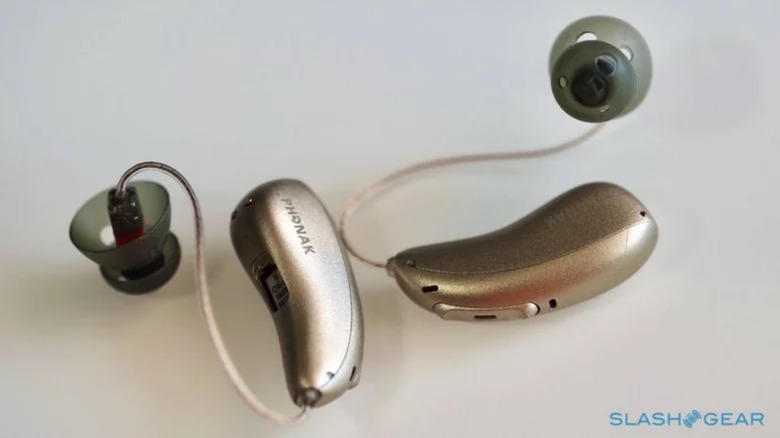Phonak Audeo Paradise Review - Next-Gen Hearing Aids
- Clear and crisp sound quality
- Connects to any devices with Bluetooth, up to 8 devices & 2 active connections
- Dynamic noise cancellation & motion sensor hearing works great
- Remote support works great for distant fitting & follow up check up
- Lacks active noise cancellation
- Audéo Paradise slow to connect with myPhonak app
While the audio world might be obsessing over noise-canceling earbuds, Phonak just unveiled what could well be one of the most advanced medical hearables so far. The next-generation Paradise hearing technology is the heart of the company's new Audéo Paradise hearing aids, complete with a whole new chipset, motion sensor, speech enhancer, tap control, personalization, and last but by no means least, true multi-device connection to any Bluetooth enabled devices. These are about as far from your grandparents' hearing aids as you can imagine.
But first, let's talk about hearing loss
Before we get started, if you're reading this review, there's a good chance that you fall somewhere in the seven year-denial range. Maybe you've noticed some hearing degradation – whether or not you've admitted it to yourself fully – or your friends and family might have told you to get your hearing checked because of how many times you ask, "I'm sorry, say again?"
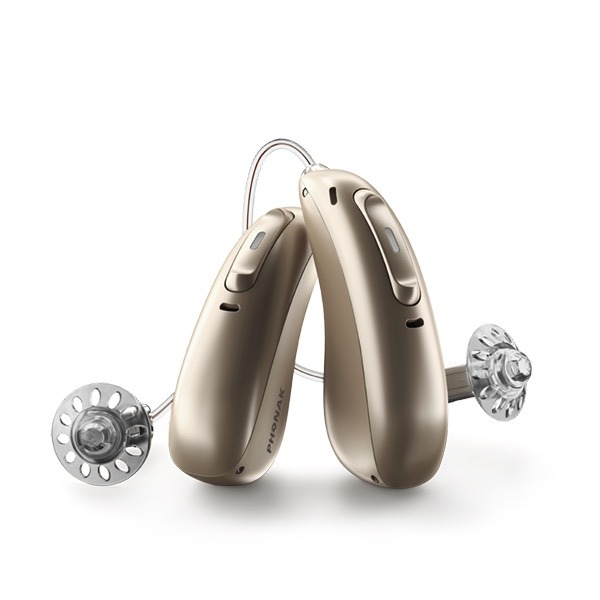
Fret not; you're not alone, and you're in good company. There's a significant negative stigma for hearing loss, so I'm here to reassure you that it's normal. I'm not a physician, but even my time studying pre-med was enough to know that ignoring medical issues only leads to other medical-related problems manifesting down the road.
Many of us have our eyes examined and get fitted with glasses at some point in our lives, which we're fine with. Why, then, is it that we're all so terrified of wearing hearing aids? Even people who have taken steps to get fitted for hearing aids often avoid wearing them, even though it's clear that their daily lives should improve immensely.
Perception is reality
Studies have shown that people with hearing loss avoid hearing aids because wearing them means that they've admitted to looking old, feeling old, weak, or even feeble. That's despite wearing glasses, to address another of the five basic senses, being deemed acceptable.
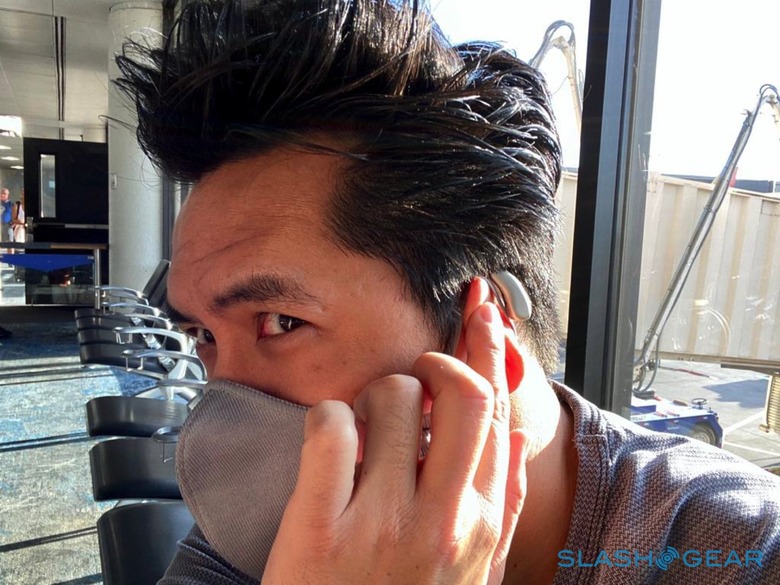
Interestingly enough, Dr. Margaret Wallhagen, Ph.D., published a study that supported the negative stigma associated with hearing loss. It boils down to the sense of feelings of altered self-perception, such as being "abled" versus disabled, and smart versus cognitively impaired. In the end, vanity wins, because people don't want to look like, or be viewed as, old.
Hearing aids and the technologies powering them
Some people, who not only require hearing aids but have looked past the negative stigma, still aren't wearing them. Turns out, not all hearing aids are the same. At the core – and at the risk of oversimplifying things – their essential function is to amplify sound. However, the reality is that a simple idea covers a whole lot in practice.
I've tested and reviewed hearing aids from all the major manufacturers, and sure enough, they do offer the essential functions such as "making sound louder," but that's still perhaps just 5% of the overall list of features and functionalities. It's 2020, and I'm delighted to share that hearing aids no longer just turn up the volume. They're rich in features and are far more advanced than you might be aware of: indeed, they've morphed into "hearables" the way cellphones are now smartphones.
I started reviewing Phonak hearing aids more than four years now, back with the company's first product with universal Bluetooth connectivity, the Audeo B-Direct. If I'm blunt, all I can really remember was that it was downright awful. Rather than connect directly to devices like your iPhone, the hearing aids paired up with a Bluetooth dongle, and then the dongle connected to your phone, laptop, or television. This meant having the additional cost and the inconvenience of wearing the dongle somewhere on your person, not to mention another thing to keep charged.
I did say that that first release, powered by Sonova's SWORD chipset, was more like a beta. Initially, for example, audio streaming from your device went to only one ear. Not a big deal for phone calls, sure, but imagine watching a movie on your iPad with audio streamed only to one side. Phonak remedied that with Marvel, its next-generation platform in late 2018, and it fixed other problems along the way. Still, it was limited in pairing to just two devices, and you could only connect to one device at once. Switching devices was, to say the least, a nightmare.
It's Paradise, I'm in paradise!
Like others, I made my frustrations known loud and clear to Phonak. Now, two years after Marvel, the company has its latest – and greatest – version, Paradise. At the risk of spoiling my own review, I can say now that it checks off everything on my wish-list.
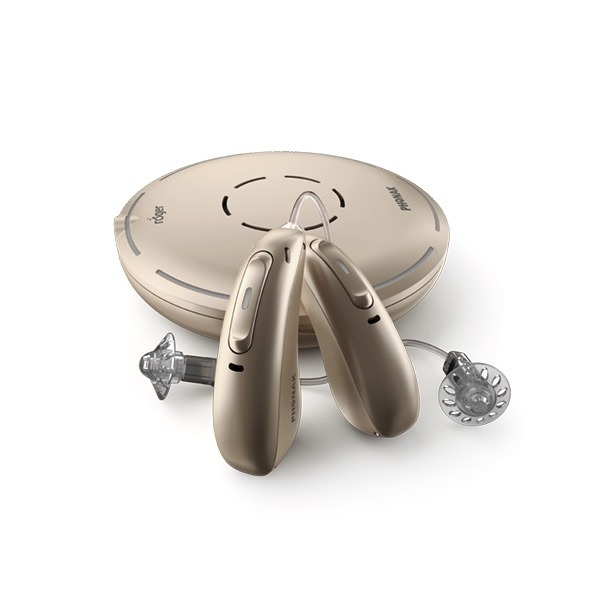
The leap from 2019's Marvel 2.0 to today's Paradise isn't revolutionary, but more of an evolution toward an improved platform. It centers around a new sound processing chip called PRISM, or Processing Real-Time Intelligent Sound Management, which is much double the speed of previous versions, and paired now with twice as much memory. That means it can do things like pair the Audéo Paradise with eight devices while actively connecting to two; Motion Sensor Hearing; a Speech Enhancer; Dynamic Noise Cancellation; APD 2.0; and finally AutoSense OS 4.0.
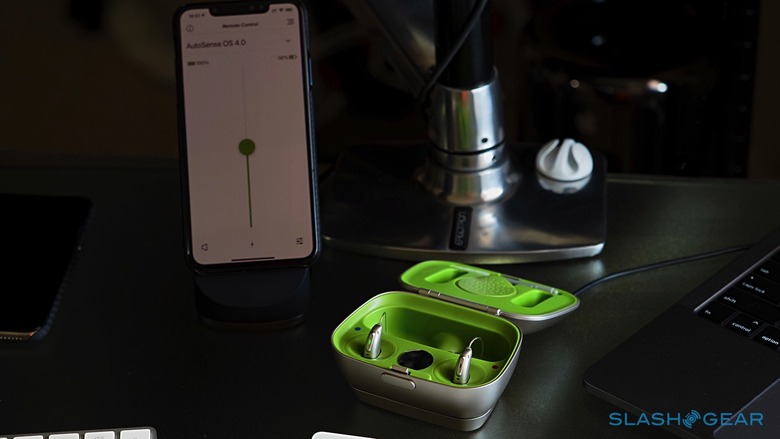
One of the key components is Phonak's proprietary fitting formula, Adaptive Phonak Digital (APD) 2.0. It's part of the reason for the immediate impression I had, of just how much better music streaming sounds compared to Marvel. There's a much more nuanced balance between loudness and sound quality. APD 2.0 relies on a new processing algorithm with precalculation, which is capable of reducing perceived reverberation and listening effort in loud environments.
With so much going on internally, I was cautiously optimistic about my expectations for how the Audéo Paradise hearing aids might perform throughout the day. In all honesty, the sound quality coming from Marvel 2.0 in my custom Virto Black hearables already sounds top-notch, so moving to the Audéo Paradise only seemed marginally better at first. After a couple of days, though, it became much clearer to me that everything, right down to the voices coming from the TV, sounds more natural. More importantly, since my hearing loss is mild – and only in the higher frequency range – I don't get the sensation of my ears being plugged up.
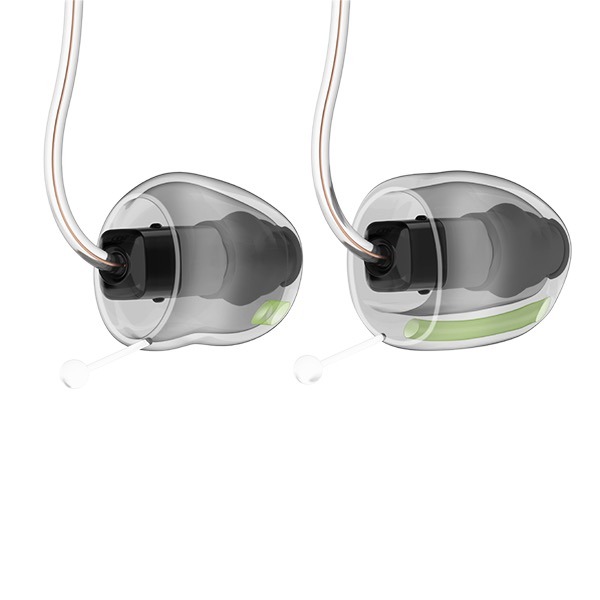
The technical term for that feeling is occlusion, and the best example of the effect is if you get water in your ear after going swimming. Everything you hear, including the sound of your own voice, seems muffled, as though you're stuck inside a barrel. For me, this one improvement alone is a day and night difference.
Bluetooth Connectivity: 'Made for All'
Phonak took on a challenge that other hearing aids manufacturers wouldn't touch with a 10-foot pole, and that is to develop a platform that would allow for connecting to any device with a Bluetooth radio. You can pair Paradise up to 8 devices and simultaneously connect to two of them.
If you have more than one device paired, when you first power on the Audéo Paradise, the first two in range automatically connect. That means, if I move out of range of my desktop and into the range of a laptop in another room, Paradise won't auto-connect to the laptop even though they've previously been paired. However, calling up the Bluetooth menu on the laptop and selecting the hearing aids gets them linked once more.
If I return to the last paired and connected device, such as my previously connected desktop, it will automatically reconnect when I get back to my desk.
Motion Sensor Hearing
Also new to Paradise is an integrated 3-axial accelerometer, currently being used to detect when I'm on the move and having a conversation. Basically, Motion Sensor Hearing knows when you're moving about, and it's capable of determining whether you're talking to someone on your left or right. The accelerometer detects movements from your head, which then creates a narrower field – or, as Phonak calls it, a directional beamformer – using a total of four microphones to enhance your companion's voice in preference to whatever other noises might be going on around you.
Working in conjunction with Motion Sensor Hearing is Dynamic Noise Cancellation, a spatial noise cancellation system. Don't mistake it for Active Noise Cancellation, however, as is currently popular in headphones from Apple, Sony, Bose, and others as they attempt to block out exterior sounds completely. That's not the purpose here.
Instead, Dynamic Noise Cancellation levels vary. If, for instance, you're on the move and talking to a friend, it's set much lower than if you were stationary. What I love about this feature is the "zoom" in and out effect, similar to how a high-quality zoom lens on a camera system works.
I've tried this out for myself walking with two friends on a relatively busy road while turning to talk to each of them. Again, it's not immediately noticeable, but after a few minutes of walking and talking, I found that I wasn't having to strain hard to understand what was being said. In a situation such as this, it's not just about being able to hear speech, it's about hearing what's being said clearly.
Speech Enhancer
There are times when I'm at home or in another quiet place having a conversation or watching TV, and suddenly I find myself having trouble hearing what's being said. Logically, you'd think that it should be easier to hear sounds in a quiet place, but that's not always the case if you have hearing loss. Just raising the volume across the board, meanwhile, is actually counterproductive: all that means is that you'll hear every single sound in the room – including the air conditioning vents and everything else – much louder.
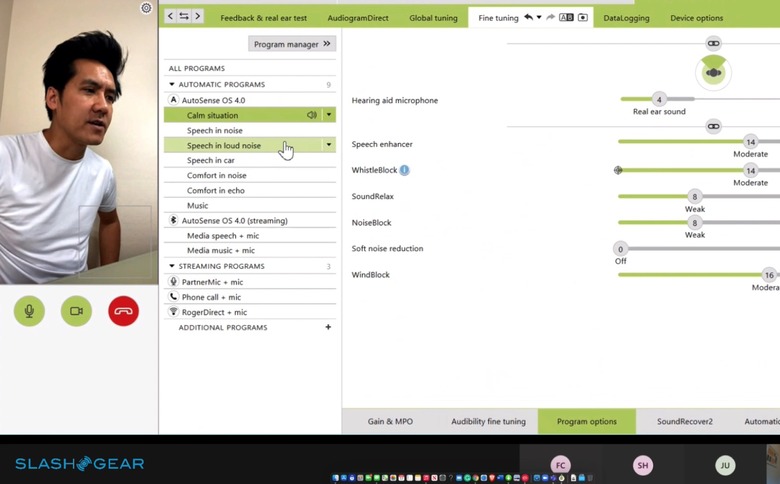
Phonak's Speech Enhancer takes a more focused approach and aims to elevate the peaks of speech in quiet situations. It's automatically controlled by AutoSense OS 4.0, which detects the environment and automatically switches to the appropriate hearing mode by flipping on and off different features. In my testing, I've noticed that when watching TV at night, when it's really quiet, spoken words come through louder and crisper, especially with certain sounds at higher frequencies that fall into the realm of my hearing loss.
For the most part, I leave it up AutoSense OS to determine the best mode for whatever environment I'm in. However, the myPhonak 4.0 app offers access to the various preset program modes, which include AutoSense OS 4.0, Restaurant, Music, and TV. If you're paired with a device capable of streaming audio content, you'll see a Bluetooth streaming + mic program in the list, too. What sets it apart from ANC approaches is that Phonak offers a remote session with an audiologist, and then each program is customized around your own hearing loss.
Streaming content
This is undoubtedly my favorite feature and the one that I use the most throughout the day. I use the hearing aids to stream high-quality music and videos and, with an all-day, non-removable rechargeable battery, you can go all day without having to worry about needing to charge.
Testing the sound quality against some of the most popular earphones in the world, Apple's AirPods, and Airpods Pro, I've found Phonak's audio is just as good or better. Part of that is how well they're tailored to my own personal hearing profile, of course. They also do a great job of isolating you while you're listening to content: using the myPhonak app, you can customize to a varying degree how much I want to block out external sounds, from turning the microphones off completely, through to off or still allowing some ambient sound to come through.
The level of customization doesn't stop there. There are three situational settings: Normal, Clarity, and Comfort. For normal, the bass, middle and treble frequencies are set to the average default level, as are the volume, noise reduction, speech focus, and dynamic settings.
Soft Noise reduction, which is also new and has quickly become another favorite feature now that I'm working from home more, helps drown out small but frustrating background sounds, such as clocks ticking or fan noise.
Selecting the Clarity option drops the bass while increasing the middle and treble, increases noise reduction just ever so slightly; Comfort is basically the exact opposite. From there, you can manually configure each of the settings yourself, give the new profile a name, and then save it for later.
TV Streamer
The TV streamer is an optional accessory that does exactly what the name implies, working as a relay to stream audio directly to the hearing aids. Now some TVs are already Bluetooth-enabled, so technically you don't need Phonak's adapter. What I found, though, is that it's much more convenient to pair it up once and then forget about it. Additionally, it doesn't take up the two precious Bluetooth connection slots. So, if you're already connected to your iPhone and laptop, you don't need to disconnect one in order to connect to the TV.
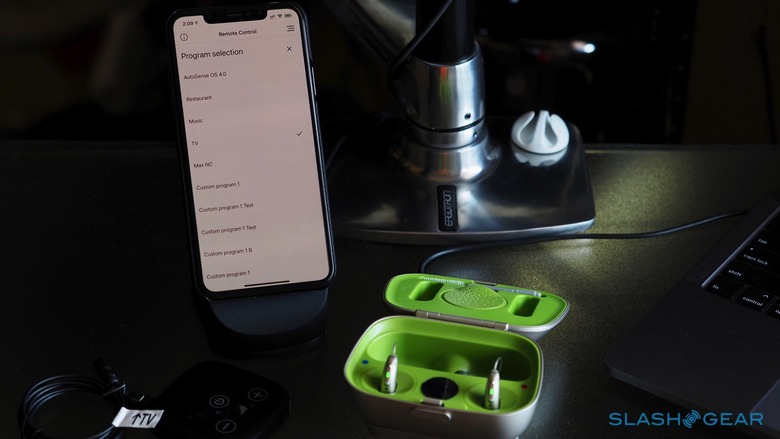
The other benefit is the proprietary connection between the two devices. The latency is much lower, and the sound quality – at least to me – is even better than a Bluetooth connection. You might even find that it can save marriages because if you like to watch TV in bed at night while your spouse goes to bed early, this is the best solution.
Double-tap your ears: tap control
Tap controls are commonplace on wireless earbuds, but if you're not careful it can get uncomfortable over time to keep knocking the buds in your ears. Phonak's answer is that you gently double-tap either the right or left ear instead, a gesture that the hearing aids are sensitive enough to react to. You can use it to trigger a voice assistant – such as Apple's Siri, the Google Assistant, or Amazon's Alexa – depending on which devices you're connected to, or customize each ear to answer or end a phone call, or start and stop streaming.
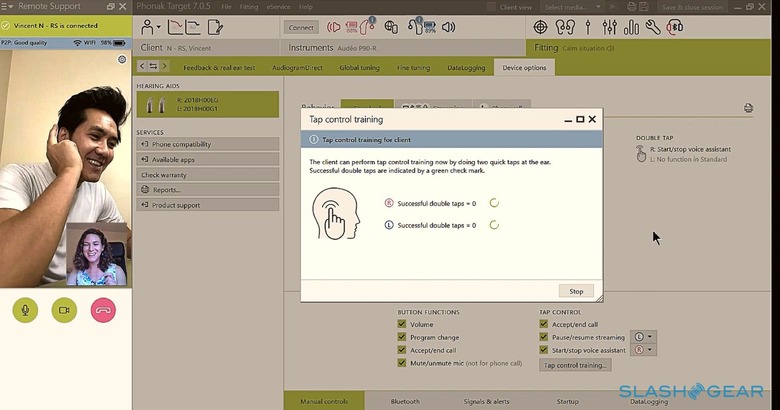
In my case, I selected the left side to play/pause streaming, while the right side activates voice assistance. If a phone call comes in – and this is dependant on how your device is set up – if you answer it from your phone it may or may not route automatically to the hearing aids. If I double-tap my left ear to answer, however, my iPhone automatically routes the call to the hearing aids.
As for streaming, if I pause and resume while streaming from TV, the TV program doesn't pause of course. Instead, sound through the hearing aids is muted. If you pause while streaming music or watching a video on your phone or laptop, however, the content is automatically placed on pause.
Remote Support and AudiogramDirect via Remote Support
At the start, I mentioned that people who have hearing aids often still don't wear them, either at all or just often enough, even once they've looked past the issue of vanity. I think that all boils down to how well the hearing aids are fitted. I don't just mean how well the physical device fits, but the quality of sound they deliver.
Programming a pair of hearing aids isn't like ordering a pair of prescription glasses. With other hearing aids I've reviewed, it's taken quite a few trips back and forth to the audiologist to get the settings about right. The sad truth is the sound that you hear at the audiologist while getting your hearing aids programmed is very different than what you hear at home or in the office.
Phonak's solution to that is Remote Support, which connects you to an audiologist face to face right in the myPhonak app. That's done for the first fitting, but also for follow-up sessions to adjust and optimize the hearing aid settings. In my case, that was with Jacqueline Drexler, Audiology Manager, at Phonak. She took the lead not only in tweaking the profiles to my own hearing loss needs but making sure I knew what features there were and how they were used.
Even though I already had my audiogram profile loaded into the review units, we went ahead and ran an AudiogramDirect test while I was wearing the Audéo Paradise in my home office. My audiogram from a hearing test by an audiologist very nearly matched up with what the AudiogramDirect came up with, and so we used the latter. Had I been having problems later on, however, I could've requested more support through the app for further tuning.
Phonak Audéo Paradise Verdict
All in all, I don't think I could be happier with the Audéo Paradise hearables. The over the ear design is lightweight and comfortable for all-day wear, while sound performance and sound quality far exceeded my expectations. The rechargeable battery lasts a full day of mixed-use, between being on all day long and connected to one or two devices. Even with hours of phone calls and streaming content from my phone, desktop, and TV streamer, I haven't yet had to top-up the hearing aids' battery midway through the day.

Phonak offers four different versions of the Audéo Paradise – the 30, 50, 70, and 90 – with the primary difference being the software and features each comes with. The upside to that is if you start out with an entry-level pair and decide you want extra functionality, that can be enabled via the in-app audiologist and doesn't require a whole new pair.
As for costs, like any hearing aid system that'll depend on factors like your insurance, where you live, and your general requirements. Figure on the Audéo Paradise system falling roughly in line with other premium-tier models; I'd expect them to range from $2,500 to $6,000+ unbundled (as in, with no insurance or similar) though including the initial first fit and necessary programming. If you're familiar with the hearing aids market you'll know that's pretty much par for the course.
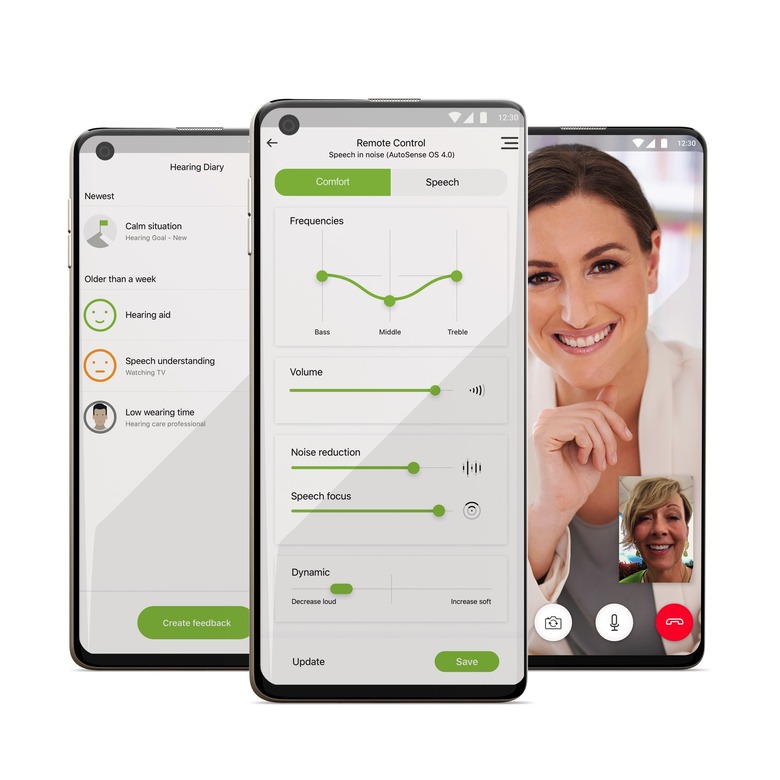
What the numbers don't tell you, though, is just what a difference a well-tuned system like Phonak's makes to day to day life. While some of the feature-set may be exclusive to the high-end versions of the Audéo Paradise, the baseline is a huge step forward in what you can hear, and where. That doesn't just make these hearing aids a game-changer, it can make them a life-changer.
